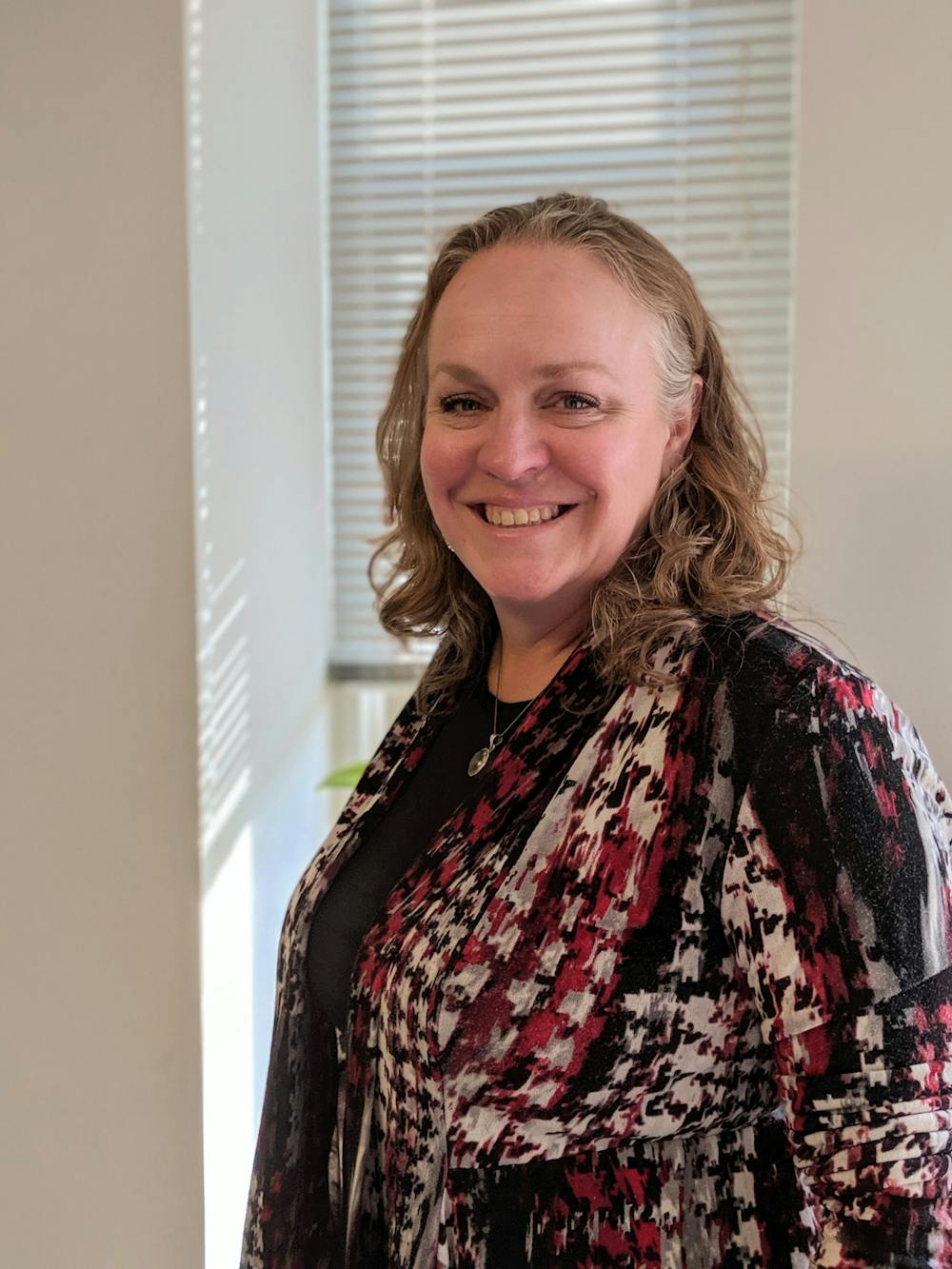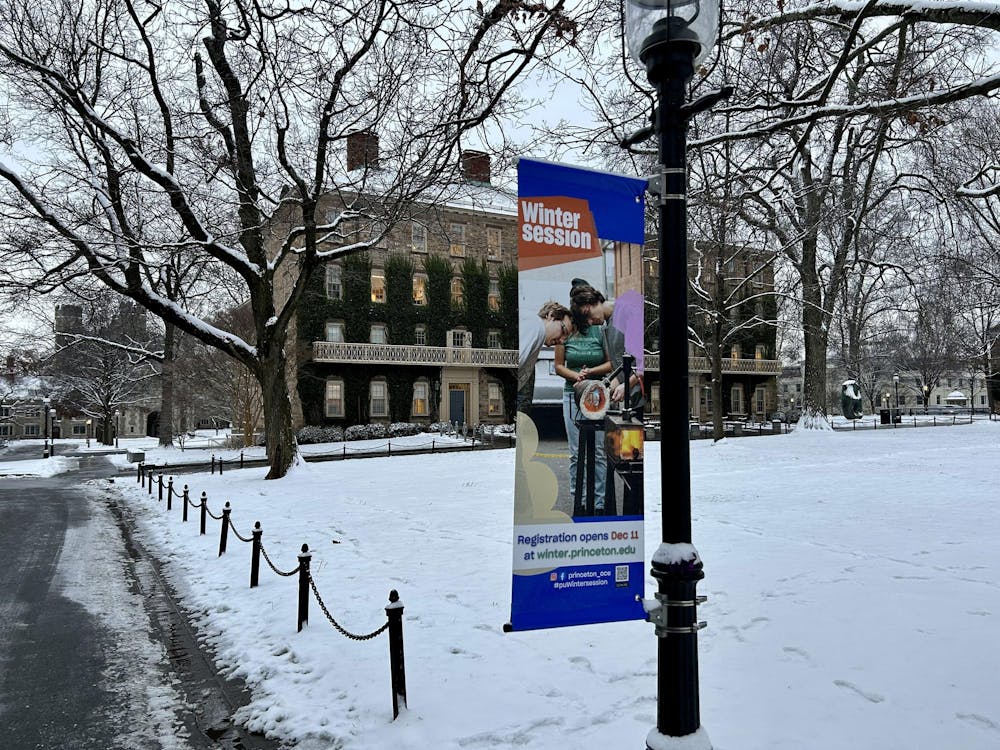Former Newark Schools Superintendent Cami Anderson is now CEO of ThirdWay, an organization focused on solving problems of equity, specifically in regards to the treatment of marginalized students in school systems.
Discipline Revolution, one of her initiatives within ThirdWay, seeks to redefine the role discipline plays in the classroom, particularly in regards to the system’s disproportionately harsh punishments towards students of color, students with disabilities, and LGBTQ+ students. On Nov. 11, she sat down for an interview with The Daily Princetonian.
The Daily Princetonian: What made you become interested in education development?
Cami Anderson: I have 11 siblings — my parents had three and adopted nine. Most of my siblings joined our family because [of] some significant challenges, and I just saw at [a] really young age how school was different for me, who was able-bodied, heterosexual, not housing insecure, than my siblings, who did not have those privileges.
Just also seeing my siblings, some of them court-involved, kids of color, LGBTQ, just [seeing] all the ways in which schools made those labels worse instead of better. I’m just driven by this question of what ... a better school system would look like, where all of my siblings could thrive … It’s been a burning thing for me since I was a kid, and it’s kind of what has driven my whole career.
DP: How does [Discipline Revolution] measure its success?
CA: We don’t just look at suspension, because if you do that, [you can] reduce suspensions [but] increase expulsion, or reduce suspensions and increase transfers or school-based arrests. For us, the ultimate measure of success is closing the opportunity gap.
We still have most school systems’ black students underperform[ing] as compared to their peers, even when we control for poverty, students with disabilities who underperform as compared to their peers. In the end, we believe that all the things we’re doing close opportunity gaps, and you can see things like decrease in chronic absenteeism … [and] better achievement among groups of folks who have been underserved.
DP: What are some solutions or alternatives to punishments?
CA: We do a lot around creat[ing] the conditions in classrooms and in schools where students feel seen and heard and whether their identities are affirmed and they’re busy doing meaningful work. So lots of stuff on prevention, high quality relationships between teachers and students, culturally responsive teaching so that students feel like they see their own culture and their own identity affirmed, de-escalation conflicts so that when young people inevitably challenge [the system], which is kind of their job, that the adults know how to meet them … We start with the premise that we shouldn’t think about discipline as a thing to do to punish kids, but rather as a set of things that adults can do to create the conditions where harsh discipline isn’t necessary.
DP: I want to talk about your departure from your position as Newark’s schools superintendent. What was the reason behind that?
CA: [My team and I] felt like the building blocks of the plan were in place. We had done a ton of great work to seed the long-term strategy, and that was just a good time to have a different and new voice.

DP: Talk to me about this plan.
CA: It’s called One Newark. We basically said, “10 years from now, what needs to be true in order for every kid in Newark to have a neighborhood school that is excellent?” Newark is a city that was built for three times the population it currently has. We looked at building quality — literally, there are some buildings in Newark that Abraham Lincoln visited. So, there’s just a lot of underinvestment buildings, too many schools for the [number] of folks living there now, and in the charter sector, there were thousands [forming], but no coordination.
So, what we did was, we sat back, and we really did look at the long goal, looked at how many families were on the waiting lists [for charter schools], what the characteristics of those families were in terms of special-ed status, ELL status, and created a whole plan. And it had all those tenets that I walked through: unify[ing] the enrollment system so that we didn’t disadvantage families who couldn’t navigate 10 lotteries, [creating] a plan for every building — so before I got there, folks would just go to school and they’d just sit there, which is just not good for communities.
So [we figured out] how many schools we actually needed and which schools were inhabitable. [We did some] portfolio planning, built a bunch of new secondary schools because we felt we just didn’t have enough diversity of options for kids in high school, [created] a plan to help retrain folks who are laid off or impacted by the right sizing of the district … We had a whole thing on talent. We had a whole recruiting thing called Teach Newark.
So it was a nine point soup to nuts, from enrollment to talent, and it was a five-year plan with lots of milestones and lots of input. It was a good high quality plan, and it continued to be executed after I left. I just felt like it was time to have a different person for that phase of the work.
DP: Can you talk about some of the findings that suggested the plan caused massive layoffs among teachers?
CA: It didn’t. There’s a lot of misreporting about what was and wasn’t in that plan. So there’s about a hundred schools in Newark and because the charter growth was profound, they were going to end up running around forty percent of the schools based on the growth and that’s partly because of community demand — I think there’s something like 5,000 people on [the] charter school waiting list — which meant that the traditional system was shrinking. So it is true that there were fewer jobs available as a result.
The vast majority of those right-sizing, we were able to rely just through natural attrition because every year, when you have a system that big, x number of people retire, and we had an older teacher population to begin with. So I would say the vast majority of the right-sizing, we were able to realize just through natural attrition. So we had 100 jobs one year, 20 people left, and we just closed those positions. The reported massive layoffs are not accurate.
DP: I wonder if you could tell me a little bit more about why people are investing in charter schools as opposed to fixing public schools.
CA: Yeah, I see it as a “both and,” and we did in Newark, too. Charters have a lot of flexibility, [and some use it] to do many innovative, kid-centric things. With traditional schools, you have a lot more constraints … Meanwhile, the school itself is not good and families are frustrated. That’s what families in Newark would say all the time, like, ‘we want things fixed now. Don’t tell me that you have to negotiate with four unions to make it happen. I don’t care, my kid can’t read.’
Having said that, we also believe that there are things you can do from the traditional side, and we did them. In a bigger system, you can buy the best stuff, because you have the power of the purse. [You have] innovative collective bargaining agreements that allow you to retain the best folks and give flexibility to schools that are doing well.
DP: Do you have anything else you’d like to add?
CA: It’s good to be here, at Princeton. I’ve already met students ... in the public policy space and beyond who are really thinking deeply about wanting to contribute to serving in a public policy type of role and trying to solve public policy issues. I think that’s great and the only thing I would say is that it’s not easy …
We have massive racial inequality as an example, and changing that’s going to be uncomfortable. So I’m glad to see there are people who want to be a part of the solution. I’m lucky that I’ve been at it all these years, and I plan to be at it for many more.








